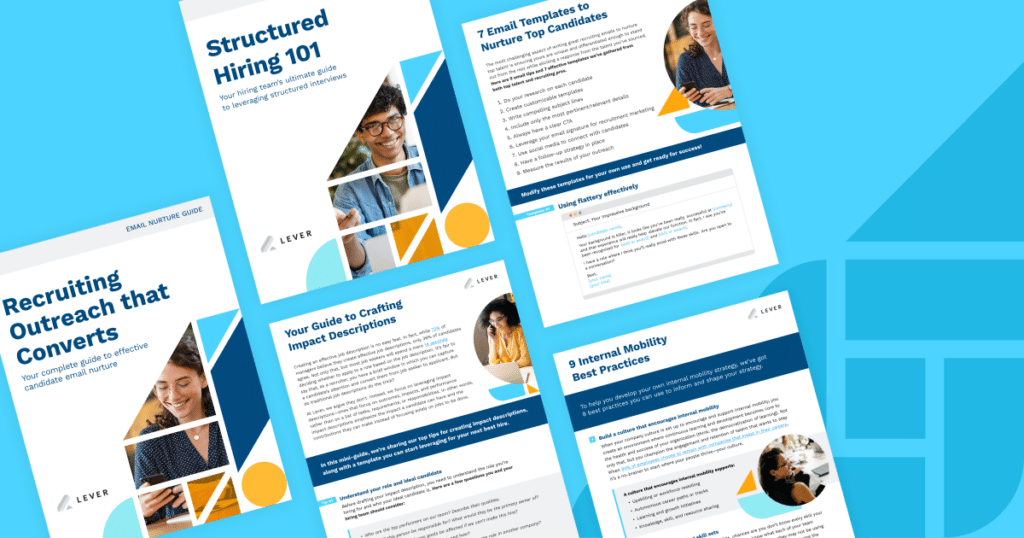One of the core ways your organization can nurture and retain top talent is by using a strong employee onboarding process. By thinking far ahead of your new employees’ first day, you can develop an onboarding program that starts from day one—the moment you decide to hire a new team member.
How, exactly, do you create an onboarding process such as that? It starts with understanding what onboarding is, and how a new employee onboarding process differs from traditional initiatives companies take to welcome new hires to the fold.
Let’s dive in!
What is an employee onboarding process?
In a nutshell, employee onboarding refers to the process of integrating new employees into your organization. An effective onboarding process will help new employees get to know your company’s culture, mission, and values, in addition to your team structures.
Employee onboarding is crucial in setting up new hires for success, as it empowers employees to seek out and absorb the knowledge, insights, and various team dynamics they’ll need to be aware of to function as productive members of your organization.
Onboarding new vs existing employees
When onboarding a new employee, chances are your onboarding process will look a little different. That’s because bringing a new hire on board requires different initiatives than onboarding existing employees to new roles when leveraging internal mobility.
To effectively onboarding a new and an existing employee, you’ll need to consider:
- How their goals and objectives differ
- The approach you’ll take to aligning the employee with their manager
- How you’ll create a development plan that helps them grow
- What you’ll do to transition an employee from one team to another, or from a previous company to a new one
What does an employee onboarding process look like?
‘Onboarding’ is one of those pesky catch-all phrases that means something different to every organization.
Today, however, innovative companies are revising their onboarding processes to encompass the entire pre, mid, and post-recruitment experience, meaning smart recruiters will begin onboarding candidates as they recruit them, helping them become familiar with the company before they even accept an offer.
Therefore it’s important to understand the distinction between onboarding and orientation and training, along with informal and formal onboarding processes.
Onboarding vs orientation
It’s not uncommon for companies to use these terms interchangeably, but onboarding differs from orientation in a few respects.
With onboarding, you’re gradually introducing an employee to their new company, such as the culture, values, and mission. Employees are engaged in various activities and regular team initiatives that enable them to understand how they’ll work, what they’ll be achieving in their role, and the projects they’ll contribute to. In this sense, onboarding is an ongoing effort that supports new hires as they become invested in their roles.
Orientation, on the other hand, is a time-based activity that typically looks a bit more administrative—think about HR paperwork and payroll setup, first-week team-building activities, IT and workplace safety training, etc.
Onboarding vs training
By now, we understand the differences between onboarding and other new hire initiatives, but training can also be confused with onboarding—something to be conscious of when welcoming new employees into the fold.
Whereas onboarding is the ongoing process of supporting new hires in their roles, training focuses on the technical aspects of someone’s role. Training thus occurs over time but is a large focus of a new employee’s first few months at a company, such as their 30-60-90 goals.
Let’s say, for example, that you’ve hired a new Junior Recruiter to join your team. Training may comprise teaching this new recruiter how to use your ATS, the process your team follows for requisitions, walking the new hire through your project management software, teaching them how to use various tools your entire team leverages, and other task-related initiatives.
This is training, not onboarding, and while you can incorporate training into your onboarding program, training shouldn’t supplement an onboarding process.
3 considerations to improve your onboarding process
Onboarding is an important process, especially during the first few days and months of a new hire’s time at a company (20% of new hires turnover within 45 days).
To help ensure you’re retaining those new employees you worked so hard to recruit, our friends over at Together have a few tips for your new employee onboarding process. Let’s break them down.
Employees want to get acclimated right away
Hiring new talent is a tough enough job on its own; onboarding them is even more challenging. A new hire is like a plant that needs sun and water to grow—they need to get acclimated starting on day one in order to thrive in their new work environment.
Top talent expects that the onboarding process includes:
- Early career support that sets them up for success
- Orientation towards the culture and values within an organization
- Insight into their role in the organization so they know how they fit into the whole
- Activities to help them form and build upon beneficial relationships with their peers and leaders
When new hires understand an organization’s culture and understand the role they play, they’re motivated and want to drive the company towards its missions and goals.
Talent wants to be engaged from the get-go
An important part of any effective onboarding process is making sure everyone feels valued. An organization is more likely to experience high retention and low turnover if its employees are committed professionals—recognized for talent and excited about what they do. Creating a supportive team environment where new hires are engaged through initiatives like mentorship is one of the best ways for employees to succeed.
Group mentoring programs for new hires, in particular, are a great way to set up new talent for success. Organizations can leverage group mentoring to build strategic relationships between leaders and peers. These groups come together to support each other, discuss challenges and goals, and share ideas. It’s an opportunity for new hires to meet new people and get valuable exposure to leaders.
An effective employee onboarding process will engage new hires in their work while helping them feel recognized and appreciated, creating an accepting working culture where people can grow.
Employees want recognition—even if they’re new to your organization
Employee recognition is crucial. Consider that:
- 44% of employees have left their job for new ones due to a lack of recognition
- Over 9 out of ten HR professionals believe recognition and rewards improve employee retention
- 37% of new hires feel recognition is important and it will encourage them to work better
Some studies have even found that, when evaluating the difference between employees who received recognition and those who did not, recognized employees are:
- 2x more likely to go the extra mile
- 2.2x more likely to embrace innovating thinking
- 2.6x more likely to believe promotions are based on merit and performance
7 mistakes to avoid with your new employee onboarding process
When you think of your current onboarding process, are there any challenges your team runs into time and again that prevent new hires from onboarding successfully? As onboarding is such a crucial aspect of hiring and retaining employees, there are 7 common mistakes you can avoid with your new employee onboarding process.
- Not properly preparing for the person’s first day—have a plan to get the administrative tasks out of the way before a new hire’s first day.
- Thinking of it as just filling out paperwork—onboarding isn’t about filling out documents or paperwork; it’s about ingratiating a new hire into your team and your culture.
- Not providing a proper introduction to the culture you’re building—this is your chance as a hiring manager to educate an employee on your company’s mission, vision, and ethos.
- Not connecting new hires with their peers and potential mentors—new hires should be given the same opportunities for mentorship and advancement, even if they’re new!
- Throwing employees into the fire immediately—build a new hire’s confidence by giving them quick wins to accomplish.
- Not providing or consulting with them about onboarding goals—give a new employee insight into the 30, 60, and 90-day goals you have for them and their role.
- Forgetting to check in with a new hire—make time to check in with a new hire, answer their questions, and ensure they have what they need to succeed.
Prep every new hire for success in your organization
To set up your new hires for success, change your mindset around onboarding. Focus on the person and what you can do to help them succeed:
- Consult them on their goals, tie them back to the onboarding process;
- Connect them with their peers and assign them mentors;
- Provide opportunities for them to learn about the culture;
- Check-in with them periodically to remind them they’re supported.
Another way to ensure your onboarding process is successful is by hiring the right people and ensuring they have what they need to succeed in their role. Our recruiting toolkit has every resource you need to help make hiring smarter, not harder—especially when it comes to retaining top talent!
Get access to the entire toolkit so you can grow with your organization—from day one and beyond. Click on the image below for access!



